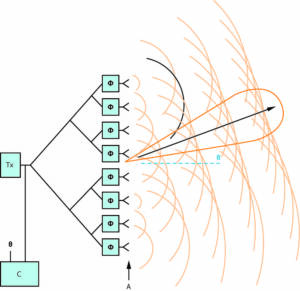- Pros and cons of using fiber optics for your home network
- How to properly connect a fiber optic cable to a router
- Configure network settings for optimal fiber network performance
- Fiber Optic Safety: Tips and Tricks
- Frequently asked questions about fiber optics and its connection to the router
- How to increase internet speed when using fiber optics
Pros and cons of using fiber optics for your home network
Fiber optics is an advanced data transmission technology that can significantly improve the speed and quality of your internet connection. However, like any technology, there are pros and cons to using fiber optics for your home network. One of the main advantages of fiber optics is the data transfer speed. It can reach several gigabits per second, which is significantly higher than traditional wired or wireless networks. Moreover, fiber optics are more reliable than other types of networks, as they are less susceptible to outside interference. However, using fiber optics does have its downsides. Firstly, installing it can be quite complex and requires knowledge and experience. Secondly, fiber optics can be expensive to use, especially if you need to install it over a long distance. However, if you want the best speed and quality of internet connection in your home, fiber optics may be the best choice. Installation can be complex, but if you hire professionals, they will be able to install fiber optics so that it works as efficiently as possible. Choosing a router for fiber optic internet is an important step that can affect the speed and quality of the connection. When choosing a router, you need to consider several factors, such as processor power, RAM capacity, support for the Wi-Fi 6 standard, etc.
d. Also, do not forget that the router must meet the technical specifications of your provider and support a fiber optic interface. Therefore, before purchasing, be sure to check with your provider which routers they recommend for use with fiber.
How to properly connect a fiber optic cable to a router
If you decide to connect a fiber optic cable to your router, then you need to know that it is not as simple as it seems at first glance. But don't worry, we have prepared a detailed guide for you that will help you cope with this task.
Step 1: Preparation
Before you start connecting the fiber optic cable to the router, you need to prepare all the necessary tools and materials. You will need a router, a fiber optic cable, a fiber optic cable adapter, and a crossover cable.
Step 2: Connecting the Cable
Connect the fiber optic cable to the adapter and then connect it to the router. If you have a crossover cable, connect it to the WAN port on the router and to the port on the adapter.
Step 3: Setting up the router
Now that the fiber optic cable is connected to the router, you need to configure it. Open your browser and enter your router's IP address in the address bar. Go to the router settings page and select the 'PPPoE' connection type. Enter your credentials that you received from your Internet Service Provider.
Step 4: Check Connection
Once you have set up your router, check if your Internet connection is working. Open your browser and go to any website to test your connection speed.
This was a detailed guide on how to properly connect a fiber optic cable to a router. We hope it helped you with this task and you were able to successfully set up your Internet connection.
Configure network settings for optimal fiber network performance
In order for the fiber optic network to operate at maximum speed and provide a stable Internet signal, it is necessary to configure the network parameters. By following simple instructions, you can connect fiber optic to the router and configure all the necessary settings.
1. Connect the fiber optic cable to the router. It is usually connected to the WAN port on the back of the router.
2. Go to the router settings. To do this, enter the router's IP address into the address bar of your browser. If you don't know the router's IP address, you can find it in the router's manual.
3. In the router settings, find the 'Internet' or 'WAN' section. In this section, select the connection type 'PPPoE'. To connect to the telecom operator's network, you will need to enter the login and password that you received from your provider.
4. Set the MTU. The MTU is the maximum size of a data packet that can be transmitted over a network. It is generally recommended to set the MTU to 1460.
5. Set up DNS servers. DNS servers are servers that translate domain names into IP addresses. Usually, your ISP provides its own DNS servers, which you can find out from them.
6. Save the settings and reboot the router.
Once you configure your network settings, your fiber optic network will operate at maximum speed and provide a stable internet signal.
One of the key aspects when connecting fiber to a router is checking the quality of the connection. To do this, you can use various tools, such as specialized programs or online services. They will help determine connection speed, latency and other parameters that affect the quality of the connection. If problems are found, you can try to solve them by taking advice from experienced users or by seeking help from specialists. You should also make sure that the router is configured correctly and meets the requirements of your provider. It is important to remember that the quality of the connection directly affects the speed and stability of the Internet, so it is worth paying due attention to this issue.
Fiber Optic Safety: Tips and Tricks
Connecting fiber optics to a router can be quite a daunting task, especially for novice users. However, beyond the technical aspects, it is also important to pay attention to safety when using fiber optics.
First, you need to make sure that your fiber optic cable is not damaged and has not been exposed to external factors such as mechanical damage or exposure to sunlight. This may result in poor signal quality and reduced security.
Secondly, it is recommended to use passwords to protect your Wi-Fi network and change them regularly. This will help prevent unauthorized access to your network and protect your data from intruders.
You should also keep your router and fiber modem software updated to ensure protection against new threats and vulnerabilities.
Overall, using fiber optics can greatly improve the quality and speed of your Internet connection, but you should not forget about security when using it. Following the tips and tricks above will help keep your network secure and protect your data.
Frequently asked questions about fiber optics and its connection to the router
If you've just added fiber to your home, you'll likely have questions about how to use it. In this article, we will answer some of the most frequently asked questions about fiber optics and connecting it to your router.
1. What is optical fiber?
Fiber optics is a data transmission technology that uses light signals instead of electrical ones. It allows data to be transmitted over long distances at high speeds and with minimal loss of quality.
2. How to connect fiber optic to the router?
To connect fiber optics to your router, you will need an optical converter that converts light signals into electrical signals. Connect one end of the fiber optic cable to the optical converter and the other end to a network device such as a router.
3. What is the maximum data transfer rate over fiber optics?
The maximum data transfer speed through optical fiber can reach several gigabits per second. However, actual speed depends on many factors, including cable quality, equipment type, and other factors.
4. What are the advantages of using fiber optics?
Optical fiber has many advantages over traditional data transmission technologies. It allows you to transmit data over long distances without loss of quality, has a high data transfer rate, and is also highly reliable and secure.
After all, optical fiber is one of the most modern and efficient data transmission technologies. If you've just added fiber to your home, the FAQs listed above will help you use the technology correctly.
How to increase internet speed when using fiber optics
If you have connected a fiber optic cable to your router, but the Internet speed leaves much to be desired, there are several ways to increase it:
1. Check the connection. Make sure the fiber optic cable is properly connected to the router and ISP. If the connection is unstable, try restarting the router.
2. Update the router firmware. Some manufacturers release firmware updates that can improve the performance of the router and increase Internet speed.
3. Change your router settings. Some routers have a Quality of Service (QoS) feature that allows you to prioritize traffic on the network. Set up QoS for applications that require high Internet speeds, such as video streaming or online games.
4. Check your internet speed. Use online services to test your internet speed and make sure your ISP provides the speed you pay for.
5. Upgrade your hardware. If your router is outdated, consider purchasing a new, more powerful device that can handle a large volume of traffic and increase Internet speeds.
By following these tips, you can increase your internet speed when using fiber optics and enjoy a fast and stable connection.
Read further:






